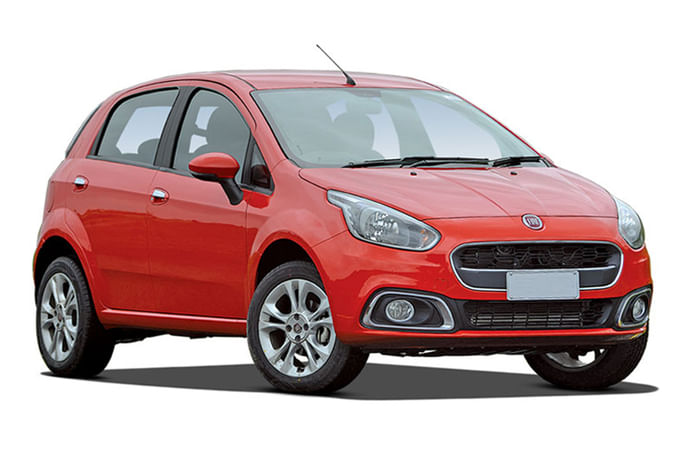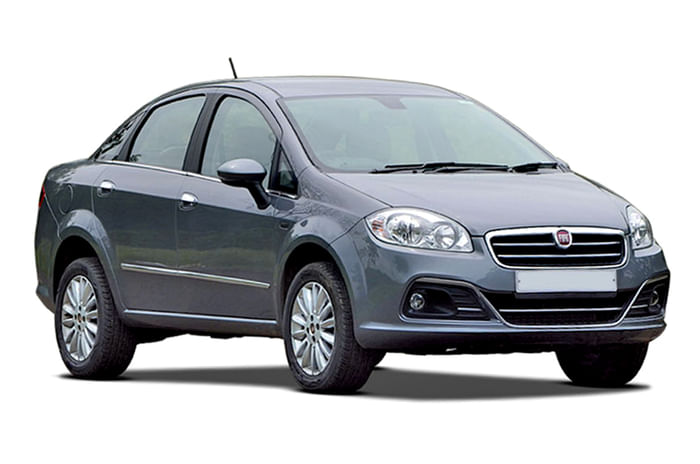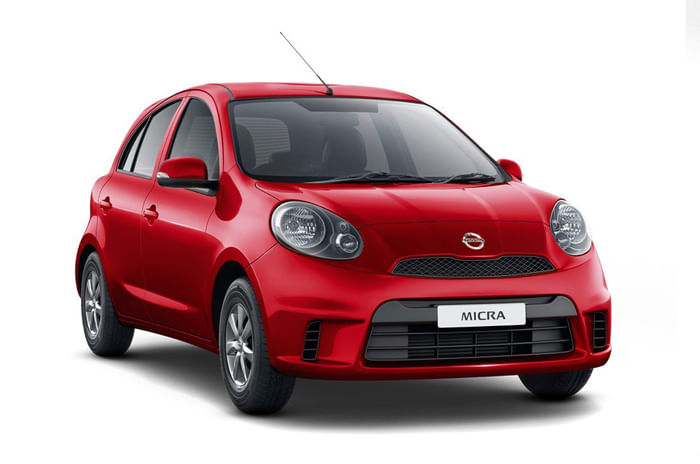That India has managed to transition from BS4 to BS6 emission norms in a matter of three years is a commendable feat. Save for a fraction of BS4 models still lying in dealer stockyards, only BS6-compliant vehicles can now be sold and registered in the country; a move that will undoubtedly help reduce vehicular emissions even further and rein in air pollution levels. What the implementation of the more stringent norms has also done is spell the end of the road for a number of cars and SUVs. The start of the BS6 era proved to be the final nail in the coffin for many models, most of which were nearing the end of their lifecycle. We’ve rounded up all the cars and SUVs that will no longer be sold in India:
Fiat Grande Punto and Avventura

Launched more than a decade ago in 2009, the Fiat Grande Punto was a breath of fresh air in the hatchback segment. It had style, a tank-like build quality and was also a hit with driving enthusiasts. It did, however, have a cramped interior, an inadequate petrol engine, and wasn’t particularly frugal. Fiat rolled out a few updates over the years, tried to lure petrolheads in with the 147hp Abarth Punto in 2015, and also tried to add some flavour to the range by introducing the crossover-styled Avventura and Urban Cross, but even those failed to prop up the Punto's flagging sales. The company sold 17 examples of the Punto, and 28 units of the Avventura in FY2020, and with sales that low, there was simply no business case for either model to be upgraded to meet the new emission norms.
Fiat Linea

Before the Punto, Fiat launched the Linea at the start of 2009. Much like the hatchback, the Linea, too, had similar traits. It was a good-looking sedan that stood out with its design flair and offered a solid build too. But the Linea also had a cramped cabin, poor ergonomics and could never keep up with the fast-evolving segment and customer expectations. There was also the issue of inconsistent quality of aftersales service which plagued the Fiat brand and resulted in a harrowing ownership experience for some. Only 80 units of the Linea were sold in FY2020, and with the model way past the end of its lifecycle, Fiat Chrysler Automobiles decided to phase out the Linea – and the Fiat brand – entirely and focus solely on strengthening the Jeep brand.
Honda BR-V

A crossover-style 7-seater for a reasonable price sounds like an attractive formula on paper, but things didn’t quite go the Honda BR-V's way right from the time of its launch in May 2016. The BR-V was based on the same platform as the Mobilio MPV, which had tanked in the Indian market, and the BR-V's MPV-like silhouette didn’t win over those seeking an SUV with a more imposing (and upright) stance. Additionally, the BR-V – while practical – missed quite a few features; and despite its updates over the years, sales of the BR-V progressively plummeted every year, falling to 1,959 units in FY2020. Honda decided to not upgrade the BR-V to meet BS6 emission norms, thus pulling the plug on the 7-seater.
Honda Accord Hybrid

The Honda Accord returned to India late in 2016 and retained most of the qualities that endeared it to loyalists. It looked stylish, had a well-appointed interior and offered lots of room and comfort, but was only available with a hybrid powertrain. Meant to be a technological showcase for Honda in India, the Accord Hybrid did all it was expected to, and was pretty fuel-efficient, too. The biggest problem though, was the fact that it was shipped in from Japan as a full import, which meant it had an unpalatable price tag. At Rs 52.92 lakh (on-road, Mumbai), the Accord Hybrid simply didn’t have enough takers, and Honda decided to axe it from its India line-up.
Mitsubishi Outlander and Pajero Sport

The case of Mitsubishi India is a curious one. The Japanese carmaker launched the Pajero Sport all the way back in 2012, and barring a few updates over the years, didn’t have much else to offer. Six years later, it brought in the third-gen Outlander, which was available only with a 2.4-litre petrol engine; and being a full import, it was pricey, at Rs 31.95 lakh (ex-showroom). While the Pajero Sport faded into oblivion, Mitsubishi seemed keen on making the Outlander work, giving it a Rs 5 lakh price cut and also intending to bring in the plug-in hybrid version. The company even reached out to the central government to ask for an extension of the BS6 deadline, but its efforts were in vain. Today, Mitsubishi India’s website lists no dealers or service centres, and its social media platforms have been dormant since last year. It remains to be seen what Mitsubishi decides to bring any new products to India; but as it stands, you cannot buy a brand-new Mitsubishi.
Nissan Micra and Micra Active

It was nearly a full decade ago that Nissan launched the Micra in India. It’s first affordable hatchback for our market had plenty of positives to offer, along with its cherubic and please-all-offend-none design. Nissan even introduced the facelift of the model in 2013 and turned the pre-facelift car into the even more affordable Micra Active; but sadly, neither Micra could keep pace with its competition. Sales sputtered with every passing year, as the Micra aged. Till February in FY2020, Nissan could only sell a meagre 680 units of the hatchback and has, unsurprisingly, decided to phase out the Micra altogether.
Nissan Sunny

The Nissan Sunny – or the caaaaaaaar, as it had come to be known, thanks to a popular commercial – put the focus on the ones in the back seat. A twin of the Renault Scala (which tanked in our market), the Sunny shared its underpinnings with the Micra and also had its fair share of strong points, but it just couldn’t keep up with newer rivals that packed in more for the money. Till February in FY2020, Nissan could only sell a dismal 552 examples of the sedan and decided against upgrading it to meet the new emission norms.
Nissan Terrano

Unlike the Nissan Micra/Renault Pulse and Nissan Sunny/Renault Scala combinations (both of which were little more than a light redesign-and-rebadging exercise) Nissan clearly tried to create greater design differentiation between the Terrano and the Renault Duster that it was based on. Launched in 2013, the Terrano was a handsome-looking midsize SUV that aimed to combine all the strengths associated with the Duster with a more distinctive design, but it never quite took off. Sales of the Terrano fell to an abysmal 347 units till February in FY2020; and in a segment that’s now booming with choices, Nissan’s SUV just couldn’t make a mark.
Renault Lodgy

The Renault Lodgy was launched in India in 2015 and received a handful of updates over the years. However, the Lodgy was lacking in a number of areas and failed to make its presence felt in the MPV space, with a lowly 352 units sold in FY2020. It was never offered with a petrol engine option and the MPV would also need to be updated to comply with the upcoming pedestrian protection norms. Renault's decision to phase out the 1.5-litre K9K diesel engine from its range was the final nail in the Lodgy's coffin.
Skoda Octavia

The Octavia is an important nameplate for Skoda – not just internationally, but in India as well, as it was the Octavia that led Skoda's entry into our market. It was, for a few years, replaced by the 'Laura', but the Octavia returned once again in 2013, in its third generation. Since then, the Octavia has been the default pick for anyone who wants a great driving experience in that segment, and it’s retained its solid build and top-class interior. A facelift in 2017 freshened things up, but the fourth-gen model has already been revealed abroad, and Skoda decided against upgrading the current car to meet BS6 norms. There is an Octavia RS available (in limited numbers, but all spoken for). However, until the all-new model arrives by 2021, there will be no Octavia on sale in India.
Tata Zest

The model leading Tata Motors' HorizoNext product plan was the Zest. Built to reclaim the space Tata pioneered with the Indigo CS, the Zest was a compact sedan with its heart in the right place. It looked smart, had a notably improved interior compared to Tata cars of the past and also came with a multitude of engine-gearbox options. It was, however, no match for the king of the segment, the Maruti Suzuki Dzire, and the sales numbers proved it. By February of FY2020, sales of the Zest slowed to 3,684 units, and with the Tigor seeing decent demand, it just didn’t make sense for Tata to continue building a second compact sedan, which is why the Zest is gone from Tata’s line-up.
Tata Safari

The Tata Safari is an icon; an SUV that enjoys cult status like few others in our market. Having been around for more than 20 years now, the Safari became synonymous with the rich and the powerful. Its hulking presence and comfy back seat won it plenty of admirers, but the Safari had begun to show its age in more ways than one. And with the Nexon covering the compact SUV space and the Harrier slotting in above it, there wasn’t much space left for the Safari, and Tata cleared out all remaining stock, selling 1,105 units of the SUV in FY2020.
Tata Bolt

The Bolt was a quick follow-up to the Zest and the second model in Tata Motors’ HorizoNext product plan. While it shared most of its strengths with the Zest, the Bolt was effectively a Zest without the third box and had little to differentiate itself from the compact sedan. Most found it a bit too similar to the Indica Vista that it replaced, and its pricing was precariously close to that of the Hyundai i20 and Volkswagen Polo at the time. Sales of the Bolt never really picked up, and Tata sold a mere 261 units before pulling the plug on the hatchback.
Toyota Etios, Etios Liva, Etios Cross

The first of the Toyota Etios family, the Etios sedan, was launched in India all the way back in December 2010. It was followed by the Etios Liva hatchback in June 2011 and the Etios Cross in May 2014. Over the years, Toyota rolled out small updates to keep the Etios line-up fresh, but in the face of growing competition from newer, fresher models, the Etios models – which had a basic, pared-back feel to them – could never really establish themselves in the market. while they were engineered to meet present-day crash-test norms, the introduction of the pedestrian protection norms was unforeseen and the Etios models weren’t designed for those. Updating the Etios range to meet the pedestrian safety norms would entail extensive (and costly) sheet-metal changes, and low volumes wouldn’t justify that sort of investment.
Toyota Corolla Altis

Another household name that has fallen victim to Bharat Stage 6. The Corolla is as synonymous with the Toyota brand as the Innova Crysta and the Fortuner, and has been the byword for reliability in the executive sedan segment. The current generation, however, has been around for six years, and while it did get a mid-life update in 2017, the Corolla Altis appeared lacking in the face of renewed competition from the new Honda Civic and the refreshed Skoda Octavia and Hyundai Elantra. While the Honda and Skoda found well over 2,000 buyers in FY2020, the Corolla could find only 806 takers. With the segment in decline, Toyota has decided to focus on strengthening its partnership with Maruti Suzuki instead and discontinued the Corolla Altis altogether.
Volkswagen Ameo

Launched in 2016, the Ameo was Volkswagen’s idea of a compact sedan for India. It aimed to blend the smart styling of the Polo and the practicality of the Vento into a more affordable package; an attempt to make inroads into the compact sedan space. However, the truncated tail section meant it didn’t have the design finesse of its siblings, and while it did offer a sublime combo of the 1.5-litre diesel paired with a 7-speed DSG, compact-sedan buyers never quite took to the Ameo; Volkswagen only managed to sell 4,726 units of the Ameo till February in FY2020. The Ameo wasn’t shared with Skoda, and the low volumes didn’t justify the cost of upgrading it with new BS6 engines.

























